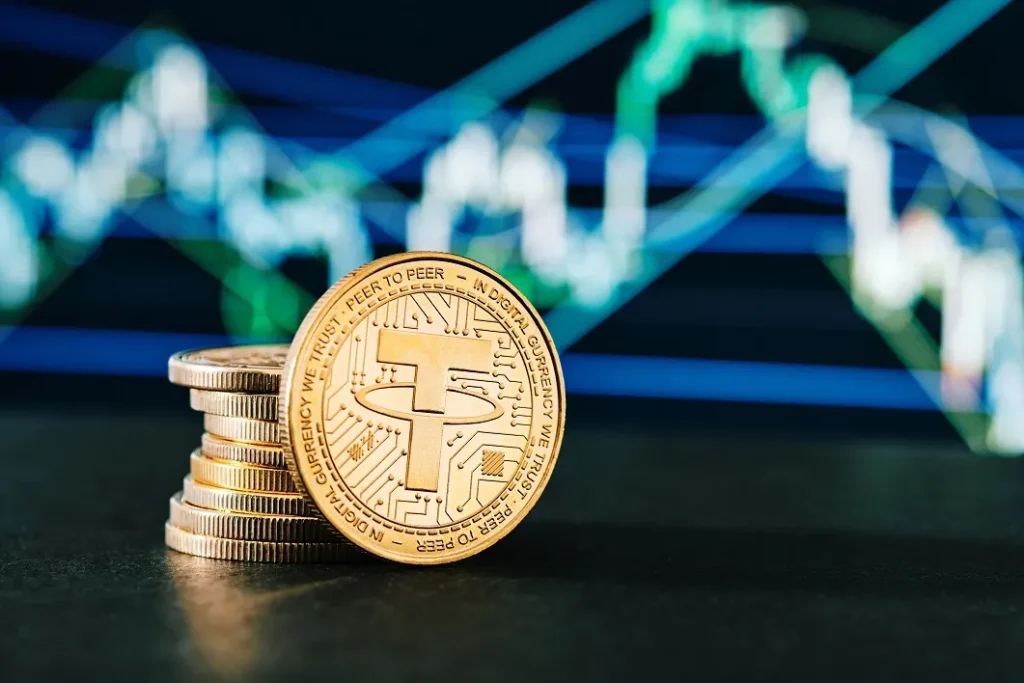he world of cryptocurrencies has been a hotbed of innovation and disruption, with stablecoins emerging as a particularly intriguing subset. These digital assets, designed to maintain a stable value relative to a real-world asset like the US dollar, have garnered significant attention from financial regulators, industry leaders, and the broader public. As the stablecoin market continues to evolve, a growing narrative has emerged around the potential for these instruments to play a stabilizing role in the US economy, particularly through their impact on Treasury markets.
The Rise of Stablecoins and Their Importance
They have experienced rapid growth over the past two years, with Tether (USDT) and USD Coin (USDC) leading the charge in terms of market capitalization. These digital assets serve as a crucial medium of exchange within the cryptocurrency ecosystem, facilitating trades on major exchanges and enabling seamless transactions between digital asset holders. Their ability to maintain a relatively stable value compared to the volatile nature of other cryptocurrencies has made them an attractive option for investors and traders seeking to mitigate risk.
Related: Stablecoin Giant USDT (Tether) Solidifies Foothold in Bitcoin Mining with 25% Stake In Bitdeer
Stablecoins as a Bridge Between Crypto and Fiat
One of the key benefits of them is their ability to act as a bridge between the cryptocurrency and traditional fiat currency worlds. By providing a stable and reliable store of value, they enable crypto investors to easily navigate between digital and traditional financial systems. This interoperability has been particularly valuable for facilitating cross-border transactions, as they can circumvent the complexities and inefficiencies associated with traditional currency conversion processes.
Stablecoins and their Potential Impact on US Treasury Markets
As the stablecoin market continues to grow, industry experts have begun to explore the potential implications of these digital assets on the broader financial landscape. One area of particular interest is the impact that could have on the US Treasury market, a crucial pillar of the global financial system.
Increased Demand for US Treasuries
By virtue of their design to maintain a stable value pegged to the US dollar, have the potential to drive increased demand for US Treasuries. As crypto investors and traders seek to hold a stable store of value, they may choose to allocate a portion of their digital asset holdings to stablecoins. In turn, the issuers of these coins may need to hold US Treasuries or other highly liquid, low-risk assets to back the value of the assets they have issued.
Related: Over 450 Million USDT worth of Crypto lost to Crypto hacks and Rug Pulls in 2024, reports ImmunFI
Stabilizing Effect on Treasury Yields
The increased demand for US Treasuries driven by stablecoin adoption could have a stabilizing effect on Treasury yields. As more capital flows into the Treasury market through stablecoin-backed investments, the supply-demand dynamics may help to dampen volatility and maintain relatively stable yields. This could be particularly beneficial during periods of market turbulence, where the Treasury market’s role as a safe-haven asset becomes increasingly important.
Enhancing Liquidity in the Treasury Market
In addition to the potential stabilizing effects on yields, they could also contribute to enhanced liquidity in the Treasury market. The ability to easily convert between these stable coins and US Dollars, as well as the potential for stablecoin issuers to hold Treasuries as part of their reserve assets, could increase the overall trading volume and depth of the Treasury market. This, in turn, could improve the efficiency and resilience of this critical financial infrastructure.
Regulatory Considerations and Challenges
As the stablecoin market continues to grow, regulatory scrutiny has intensified. Policymakers and financial regulators have raised concerns about the potential risks associated with these digital assets, particularly around issues of consumer protection, market stability, and financial system integrity. The ongoing debate around the appropriate regulatory framework for stable coins will be a crucial factor in determining their long-term role and impact on the US economy.
Related: Tether USDT and XAUT Launch on The Open Network (TON), telegram users can sent USDT
Ongoing Regulatory Developments
The US Securities and Exchange Commission (SEC) has taken a particularly active stance in regulating the stablecoin market, asserting that many of them should be classified as securities and subject to the corresponding disclosure and registration requirements. This has led to legal battles between regulators and stablecoin issuers, creating uncertainty and potential barriers to the widespread adoption of these digital assets.
As policymakers navigate the regulatory landscape, there is a delicate balance to strike between fostering innovation in the financial technology sector and ensuring the stability and integrity of the broader financial system. Striking this balance will be crucial in determining the ultimate role that they will play in the US economy, including their potential impact on Treasury markets.
Industry leaders, such as the CEO of Cantor Fitzgerald, the custodian of the stablecoin Tether, have voiced their perspectives on the potential benefits of stablecoin. They have praised properly backed stablecoin like Tether and USDC for their contributions to the cryptocurrency market and their role in facilitating transactions and trading.
Tokenization of Real-World Assets
Beyond their potential impact on Treasury markets, industry experts have also highlighted the broader implications of stablecoin and blockchain technology for the tokenization of real-world assets. The ability to represent traditional financial instruments, such as bonds, as digital tokens could unlock new opportunities for investment and trading, potentially enhancing market efficiency and liquidity.
The Future of Stablecoins and their Role in the US Economy

As the stablecoin market continues to evolve, the debate around their regulation and potential impact on the US economy will likely intensify. While the regulatory landscape remains in flux, the underlying technology and the growing adoption of them suggest that these digital assets will continue to play an increasingly important role in the financial ecosystem. Whether that role includes a stabilizing effect on Treasury markets remains to be seen, but the potential is certainly there for stablecoin to contribute to the broader stability and resilience of the US financial system.
Conclusion
The rise of stablecoins has introduced a new dimension to the world of cryptocurrencies, blending the innovation of digital assets with the stability of traditional financial instruments. As the stablecoin market matures, its potential impact on the US economy, particularly in relation to Treasury markets, has become a topic of growing interest and debate. While regulatory hurdles and uncertainties remain, the underlying technology and the growing adoption of stablecoins suggest that these digital assets will continue to shape the future of finance, with implications that extend far beyond the cryptocurrency sphere.













